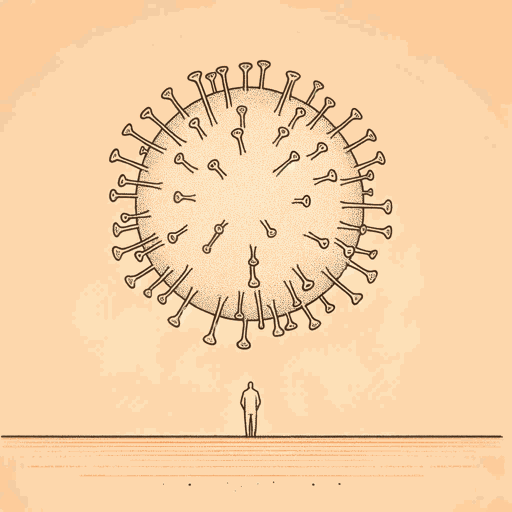82 pages • 2 hours read
David QuammenSpillover: Animal Infections and the Next Human Pandemic
Nonfiction | Book | Adult | Published in 2012A modern alternative to SparkNotes and CliffsNotes, SuperSummary offers high-quality Study Guides with detailed chapter summaries and analysis of major themes, characters, and more.
Important Quotes
“A zoonosis is an animal infection transmissible to humans. There are more such diseases than you might expect. AIDS is one. Influenza is a whole category of others. Pondering them as a group tends to reaffirm the old Darwinian truth (the darkest of his truths, well known and persistently forgotten) that humanity is a kind of animal, inextricably connected with other animals: in origin and in descent, in sickness and in health. Pondering them individually—for starters, this relatively obscure case from Australia—provides a salubrious reminder that everything, including pestilence, comes from somewhere.”
(Chapter 1, Page 14)
After introducing the mystery of Hendra virus, Quammen introduces his main subject and why it matters, along with several of his major themes. Humanity is not distant from animals, much as most people think otherwise. The course of human life is shaped by our own actions, but also by their effect on other animals. This is meant as a corrective, and as a warning: We cannot understand what any zoonotic virus means without accepting our animal status. At the same time, Quammen presents disease as traceable and knowable: Diseases have origins, and accepting his first premise about humanity’s animal essence allows us to fully understand this truth.
“Among the people visiting those temples, feeding handouts to those macaques, exposing themselves to SFV, are international tourists. Some carry away more than photos and memories. ‘Viruses have no locomotion,’ according to the eminent virologist Stephen S. Morse, ‘yet many of them have traveled around the world.’ They can’t run, they can’t walk, they can’t swim, they can’t crawl. They ride.”
(Chapter 3, Page 24)
Quammen’s catalogue of tourist activities intersperses the mundane with the potentially dangerous: Every activity humans engage in carries the potential for viral exposure. Vacations not explicitly about animal tourism nevertheless produce animal contact. And viruses, for all their limitations, travel. Quammen casts them as passengers, albeit passengers with no independence. This invisible mode of transit, as he establishes in other chapters, has profound implications for everyone an unwitting host meets on the way.

